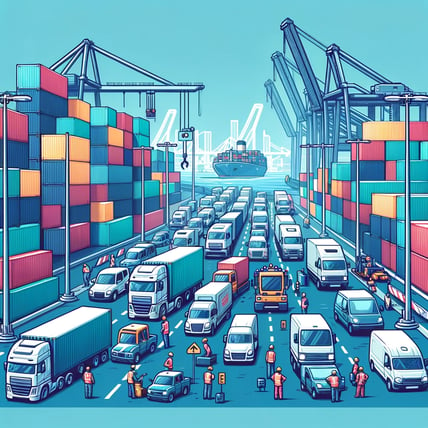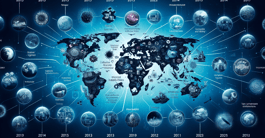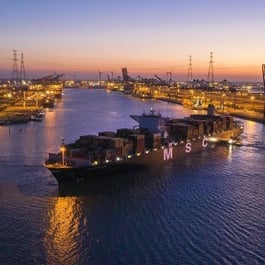A Look Back at Supply Chain Dive's Coverage - Introduction
 As a student of supply chain and international trade, my research delves into the evolving landscape of global logistics. In this context, the archives section of Supply Chain Dive's "5 years of supply chain disruptions and the lessons learned" (Leonard, 2021) presents a valuable resource for understanding how industry publications have covered recent disruptions. This summary analyzes articles from 2016 to 2021, highlighting key themes and insights into how the industry has grappled with challenges and adapted to change.
As a student of supply chain and international trade, my research delves into the evolving landscape of global logistics. In this context, the archives section of Supply Chain Dive's "5 years of supply chain disruptions and the lessons learned" (Leonard, 2021) presents a valuable resource for understanding how industry publications have covered recent disruptions. This summary analyzes articles from 2016 to 2021, highlighting key themes and insights into how the industry has grappled with challenges and adapted to change.
The Zika Threat and the Rise of Just-in-Time Scrutiny (2016)
The earliest articles (Miller, 2021; Leonard, 2021) highlight the Zika virus outbreak in 2016 as an emerging threat to supply chains. China's response, demanding mosquito-free certifications for imports, underscores the vulnerability of just-in-time (JIT) inventory management to unexpected disruptions. This raises a critical question for my research: how can we develop more resilient supply chain models that balance efficiency with the ability to adapt to unforeseen events?
Carrier Consolidation and Shifting Sourcing Strategies (2016-2021)
Several articles discuss ongoing trends in carrier consolidation (Leonard, 2021) and the diversification of sourcing strategies away from China (Kapadia, 2021). The consolidation of ocean carriers raises concerns about reduced competition and potential price hikes. Meanwhile, the shift towards a multi-source approach highlights companies' efforts to mitigate risks associated with overdependence on a single geographic region. This aligns with my dissertation's focus on identifying strategies for building robust and geographically balanced supply chains.
The Evolving Landscape of Last-Mile Delivery (2016-2021)
The rise of e-commerce significantly impacts last-mile delivery (Fuller, 2021). The surge in smaller, more frequent shipments challenges logistics providers to manage increasingly complex networks. This trend aligns with my research on the growing importance of last-mile efficiency and the need for innovative solutions to address the challenges of urban deliveries. The exploration of drone delivery (Garland, 2021) suggests potential for technological advancements to address these challenges, but further research is needed to assess cost-effectiveness and scalability.
Sustainability Concerns and The Challenge of Greener Shipping (2021)
Garland (2021) highlights the environmental impact of air freight, particularly as concerns about sustainability mount. This aligns with my research on the need for greener supply chain practices. The article cites concerns raised by FedEx's Chief Sustainability Officer regarding the difficulty of achieving true sustainability in aviation. This underscores the need for exploring alternative shipping methods and investing in cleaner technologies for existing ones.
The Human Factor: Labor Shortages and The Rise of Procurement Expertise (2020-2021)
The COVID-19 pandemic has significantly impacted the supply chain workforce. Leonard (2021) highlights challenges faced by manufacturers in filling open positions due to a skills mismatch. This highlights a critical gap in the industry, and my research explores potential solutions such as increased training programs and upskilling initiatives. Additionally, Weissman (2021) emphasizes the growing importance of procurement talent, suggesting a need for improved collaboration between procurement and finance teams to navigate complex sourcing environments.
Conclusion
Supply Chain Dive's coverage offers a valuable window into the ever-changing world of logistics. The articles highlight the industry's response to emerging diseases (Miller, 2021), carrier consolidation (Leonard, 2021), the e-commerce boom (Fuller, 2021), and sustainability concerns (Garland, 2021). The human factor also plays a crucial role, with labor shortages (Leonard, 2021) and the need for procurement expertise (Weissman, 2021) demanding innovative solutions. As I continue my research, these insights will inform my exploration of strategies for building more resilient, efficient, and sustainable supply chains in the face of ongoing disruptions.





Leave a Comment